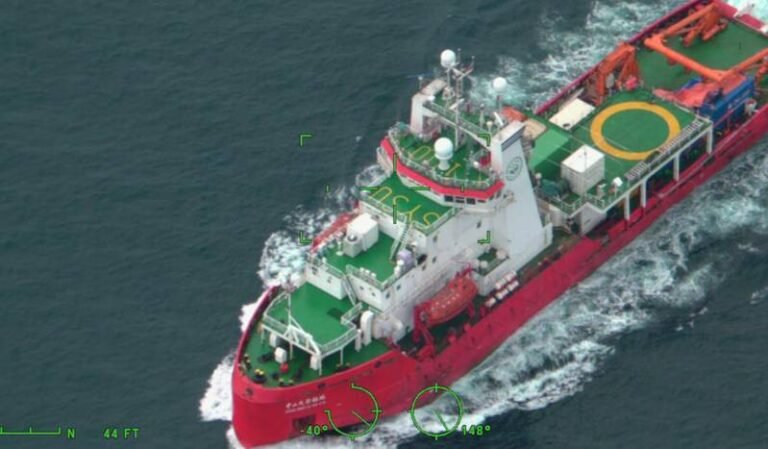The U.S. Coast Guard Monitors Chinese Research Vessels in the U.S. Arctic
The U.S. Coast Guard has detected two Chinese research vessels operating in the U.S. Arctic and is currently monitoring five similar vessels in or near the U.S Arctic.
On August 5, a C-130J Hercules fixed-wing aircraft from Air Station Kodiak responded to the Chinese research vessels Ji Di and the Zhong Shan Da Xue Ji Di as they were transiting northeast in the Bering Sea.
The following day, the crew of the U.S. Coast Guard Cutter Waesche (WMSL 751) once again responded to the Zhong Shan Da Xue Ji Di as it was transiting north in the Chukchi Sea above the Arctic Circle, after passing through the Bering Strait.
These responses were part of Operation Frontier Sentinel, an operation that aims to counter malign activities, defend sovereign interests, and promote maritime conduct consistent with international law and norms in the Alaskan and U.S. Arctic waters.
July saw the deployment of a C-130J Hercules fixed-wing aircraft from Air Station Kodiak to query the Xue Long 2, another Chinese research vessel, approximately 290 NM north of Utqiagvik, Alaska.
The increased activity of Chinese research vessels in the U.S. Arctic over the past three years is a notable trend, with three vessels conducting research operations north of the Bering Strait last year.
As the only surface presence in the Arctic for the United States, the Coast Guard plays a crucial role in the region, which is becoming a zone of strategic global competition.
Recently, the Coast Guard commissioned the Coast Guard Cutter Storis, the newest icebreaker in the fleet, at a ceremony in Juneau, highlighting the commitment to maintaining a strong presence in the Arctic.

